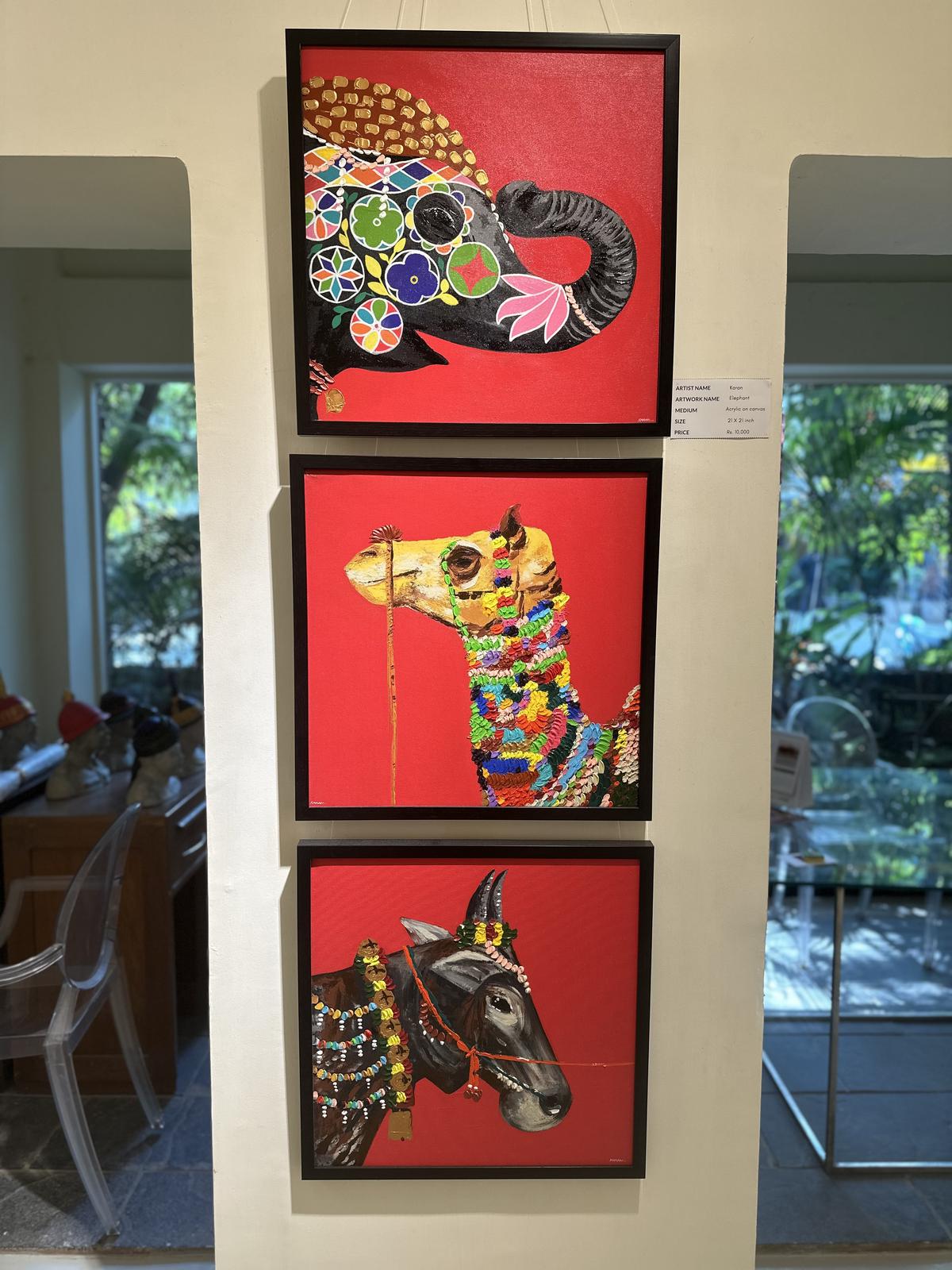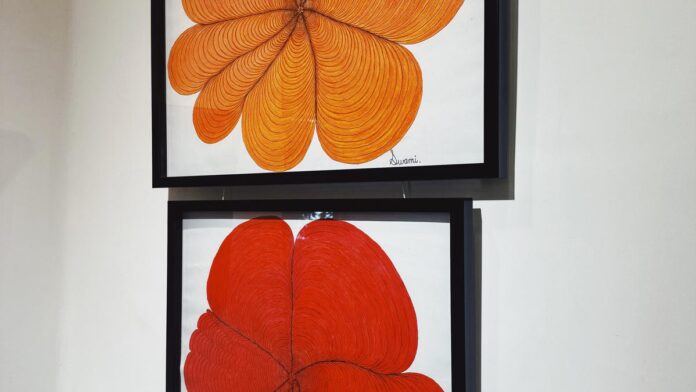
One of the works on display
| Photo Credit: Special Arrangement
Tactile tigers, sculptures that sign, and a Braille puzzle on a canvas.
At Apparao Gallery today, accessibility leads the conversation, for artworks – some interactive – by 10 artists with disabilities that occupy the otherwise conventional gallery space that Chennai’s collectors frequent. An abstract, panelled work and realistic portraits of the national animal of India, complemented by an experimental series of acrylic flora that spills over canvas frames, kickstart the display that do not follow a narrative per se. Mediums are aplenty – from acrylics and clay to paper and cloth make an appearance through canvases that hope to catch the collector’s eye. Dubbed a sensory art exhibit, the display hopes to cater to senses other than just sight and in essence advocates inclusivity even from a viewer’s perspective.
The artists who mostly hail from Chennai and Tamil Nadu are part of Kai Rassi, a not-for-profit organisation that leads vocational art programmes and creates inclusive spaces for artists with disabilities. And this marks their fourth formal exhibition. As the display opens, each of them stands guard next to their respective artworks, eager to fill the audience in on their idea behind each concept, while busy interacting with fellow artists who they share space with. For founders Divya Rao, Kadambari Narendran and Indira Reddy, the display is meant to be more than just ‘disability-driven’. Divya says, “Then, the buyer who comes in is not looking for anything more than just donating money. We wanted to change that. We wanted to make them aware that they are also getting something beautiful in return.” The idea is to make galleries want to collaborate with each of the artists in an individual capacity.
Midway, a series of 11 clay sculptures fashioned by students from the Mary Clubwala Jadhav School for the hearing impaired, makes for an interesting break in the narrative. They make one pause, and pay attention. Each sculpture is a hand mould with the imprint of each students’ hand. They depict letters from the American and Indian sign language, paired with pictures of students signing them, and read “We are Hear”: a witty take on the very disability that ostracises them. Visual artist Shreya Chajjed who led this particular project says, “They were really excited about the medium, and went about it very smartly. We rehearsed with them before making the final models.”
The showstopper perhaps is the work by UK-based, partially-blind artist Clarke Reynold, accompanied by leaflets with patterns that denote each alphabet. The viewer can use this leaflet as reference to interpret the words on the canvas. The takeaway is the message. The collaborative work is put together through a virtual workshop with students from Lady Andal IB, Yein Udaan and girls from Prem Vihar.

One of the works on display
| Photo Credit:
Special Arrangement
Aishwarya is elated. The hearing and speech-impaired artist, who specialises in many mediums of painting, has worked with fine paper-cutting this time. The delicate, concentric circles which are sometimes embellished with gilded paper, takes her nothing less than a week of work. As for Lokesh whose penchant for animal forms has been established through his acrylic works, made signs to the interpreter who translates, “The national animal of India has always fascinated me. Sometimes, I see photographs of these big cats and try to trace them onto canvas.” He points to a black-and-white series of canvases with bulls in motion and says, “But when I think of Tamil Nadu, bulls come to mind.” He is hearing-impaired.
For Anthony, who has been a carpentry and art teacher for the past 34 years with a special school in the city, art equals functionality. The unusual canvas frames on which acrylic paintings of flora spill out, came out of the need to be unique. “I wanted to do something that is a little different, which will look good in a home,” he says. He had polio as a three-month old baby. An independent artist, he strives to remove the stigma around people with physical and intellectual disabilities.
Betsy’s acrylic works speak of minute skill. Serpentine shadows fall on a path laden with trees. A tactile version of the work, by Access for All, accompanies the frame. Pavithra’s abstract series is a study on gradation of colours, blue being her muse. Siva’s line drawings on the other hand have already gained him a good following and recognition, says Divya.
The display will be on till April 2 at Apparao Gallery, Nungambakkam
#Braille #puzzles #tactile #paintings #Chennai #art #exhibition #inclusive #display
